| Craters of the Moon is one of the stranger environments in the USA. It now covers 75 square miles of volcanic lava flows which were created
between 15,000 and 2,000 years ago. There is no volcano as such but a number
of fissure vents which become active for a period every 2,000 years or so.
Some of the escaping gases and magma form cones which make tremendous
vantage points for animals such as this little fella. | 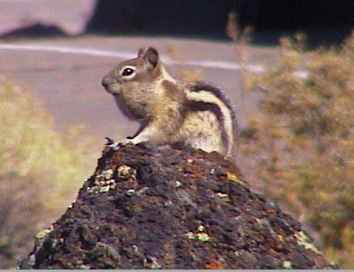 |
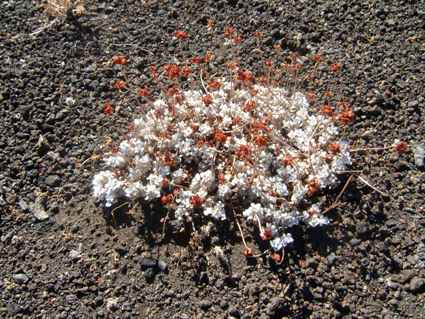 | The volcanic soil
has also helped form a unique ecosystem with over 525 varieties of plant
life supported. We only photographed a few of the commoner photogenic
species. |
| The first plants to colonise the rocks are the lichens which come
in all sorts of colours and help to make the landscape more attractive
alongside their other role of breaking down the rocks into soil.. | 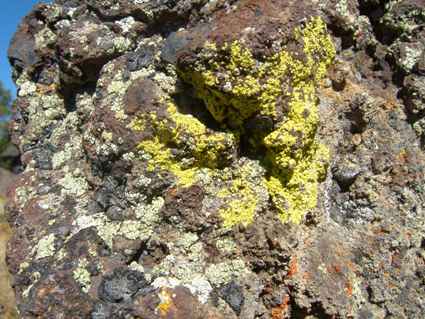 |
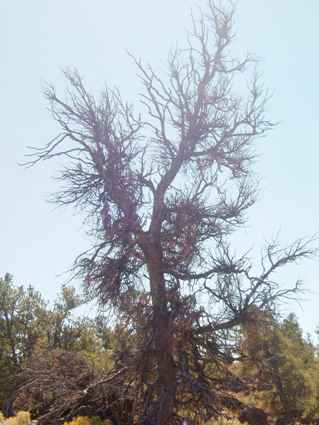 | Some plants form
symbiotic relationships with a host such as the pygmy mistletoe which
attaches itself to trees and persuades them to send more nutrients to the
growth points. This then leads to overproduction of branches which
eventually overstresses the tree and kills it. You can see the
characteristic branch clusters here. |
| Large areas are just covered in fine volcanic ash. This is
eventually colonized by the limber pines and other species. But this is a
slow process. | 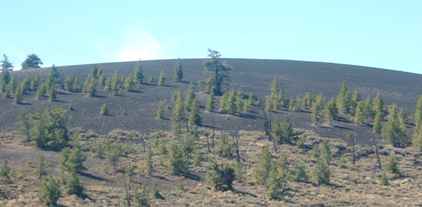 |
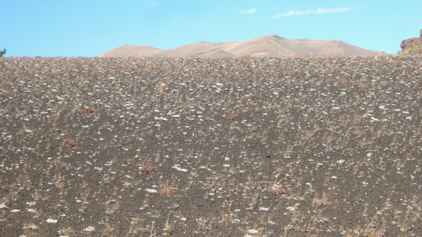 | Other tiny plants
such as dwarf buckwheat effectively capture moisture from these ash hills
starting the process of binding them together and enabling other plants to
grab a toehold. |
| But this landscape has taken several thousand years to get this
far. Footsteps easily shatter the fragile crust and have led to careful
visitor management by the NPS and the BLM.. |
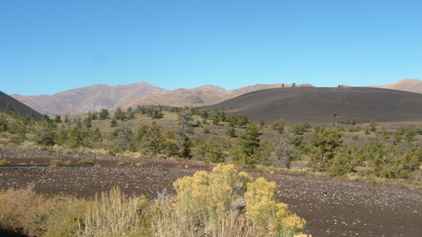 |
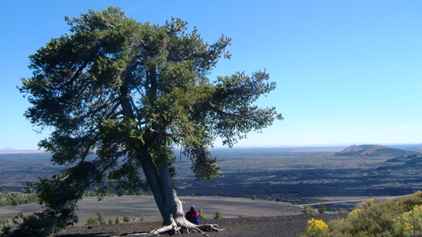 | Some of the ash
mounds are quite high as in the case of Inferno Cone which you can climb to
the top. From there you have a view of miles of virtually flat land mostly
covered by volcanic debris. |
| Just to give you an
idea of Inferno Cone, this is the view of the car park from about a third of
the way down. It was hard work going up and nearly as bad going down. |
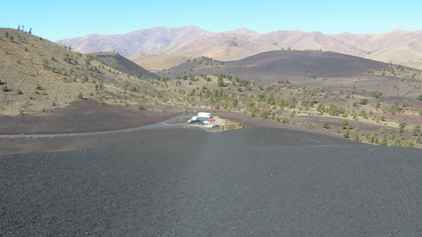 |
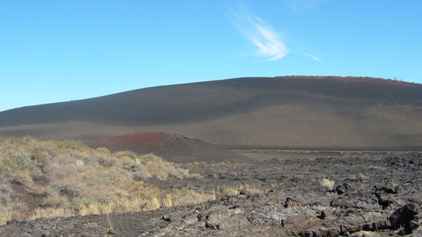 |
Another view of the cone. The original photo shows two people
climbing it about a half an inch from the left hand side. Compression and
reduction in size have eliminated them. |
| There have been small volcanoes here. This is Silent Cone. You
can actually go down inside this one (should you really want to!) |
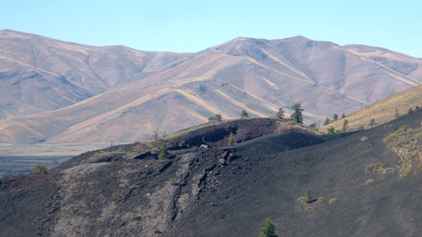 |
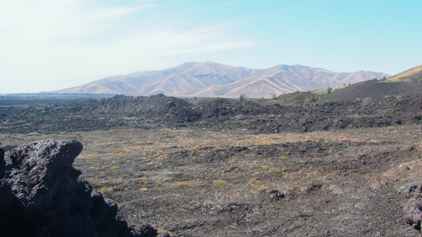 | There are two types
of lava. That which is smooth and can form ropes is called "pahoehoe" and
was formed by slow oozes. Then there is the broken rock form which is formed
by explosions shooting magma skywards. This is almost impassable and is
called "a'a" (both Hawaiian terminology). |
| Some of the tubes are large enough to form passable tunnels but
through erosion they eventually collapse. Before then they form caves.
Indian Tunnel Cave is over 800ft long, 50ft wide and 30ft high. | 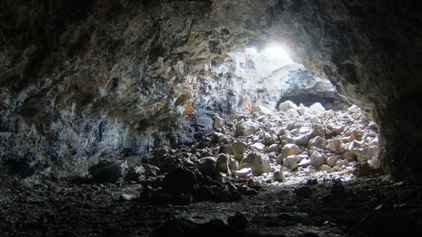 |
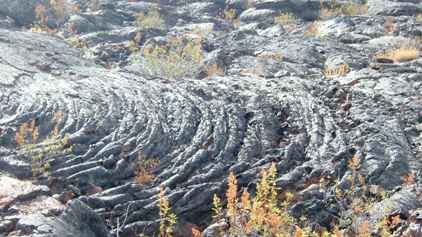 | The smaller surface
coiled 'ropes' can be very attractive, and maybe were as they were forming. |
| The most accurate dating of this site has come from this Triple
Twist tree which has tree rings indicating it was 1350 years old. The lava
underneath is from the youngest flow. | 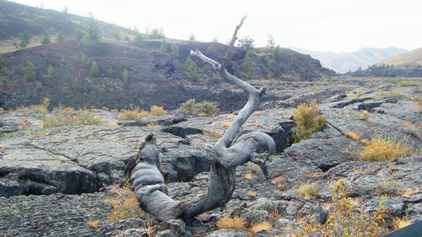 |
|